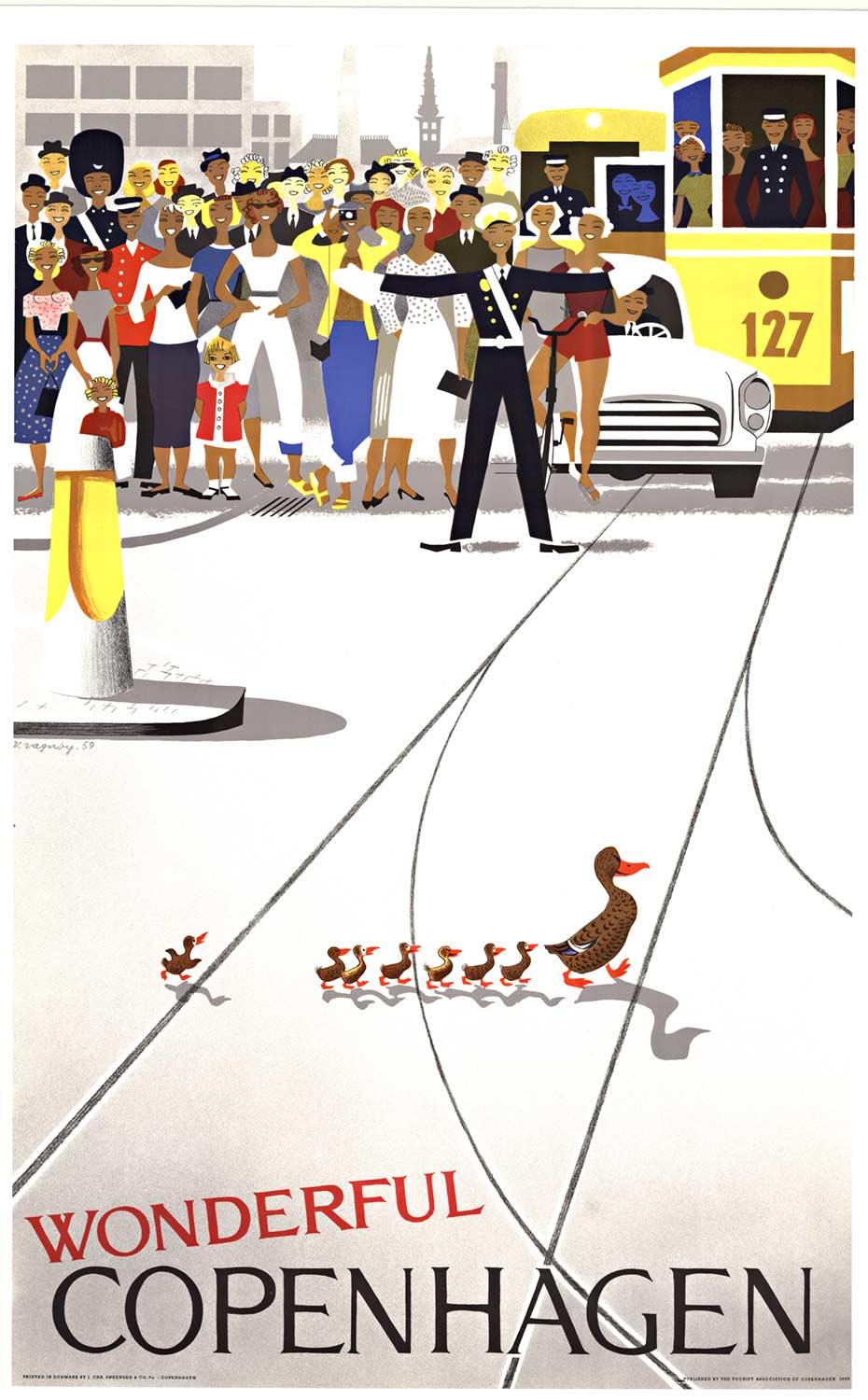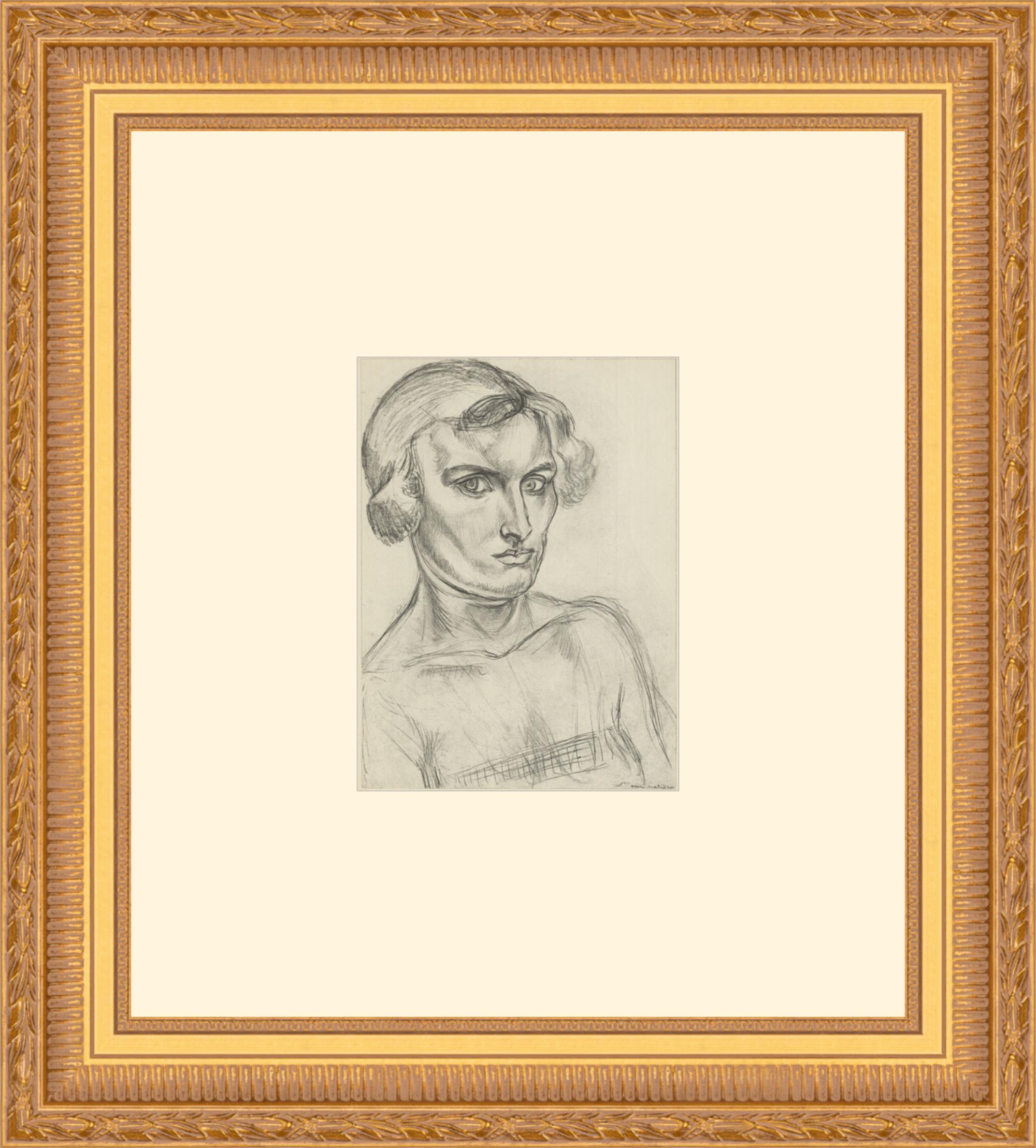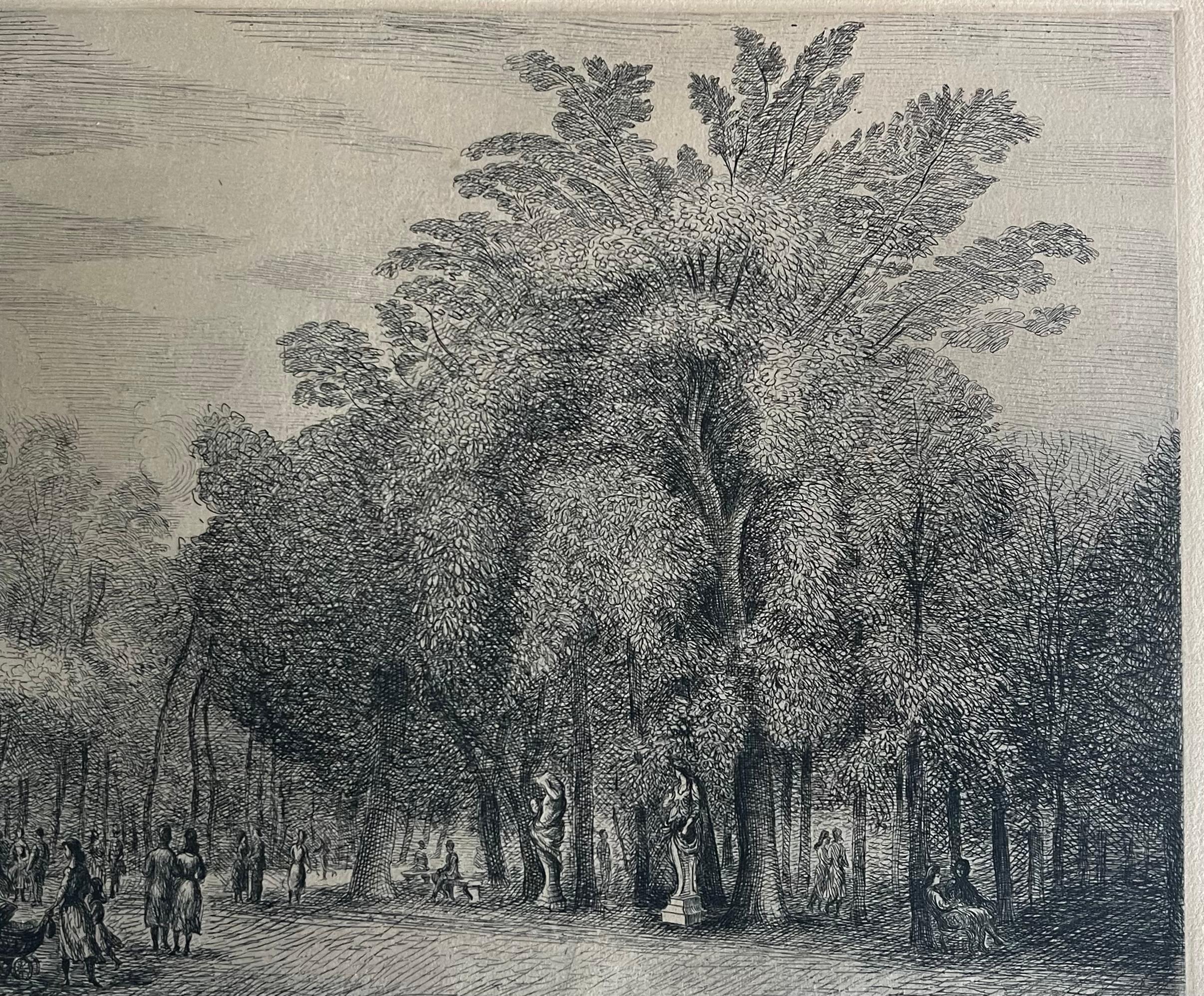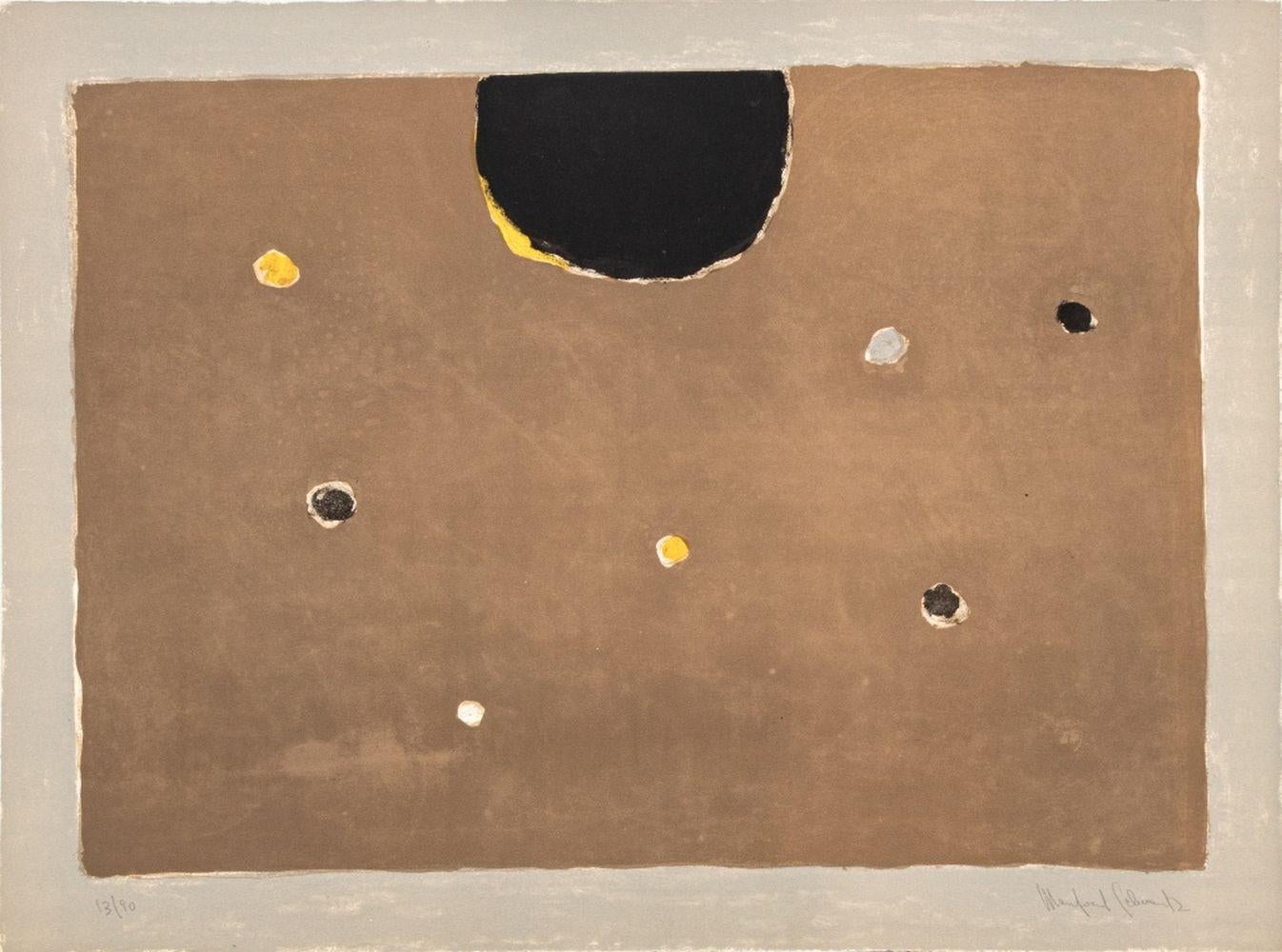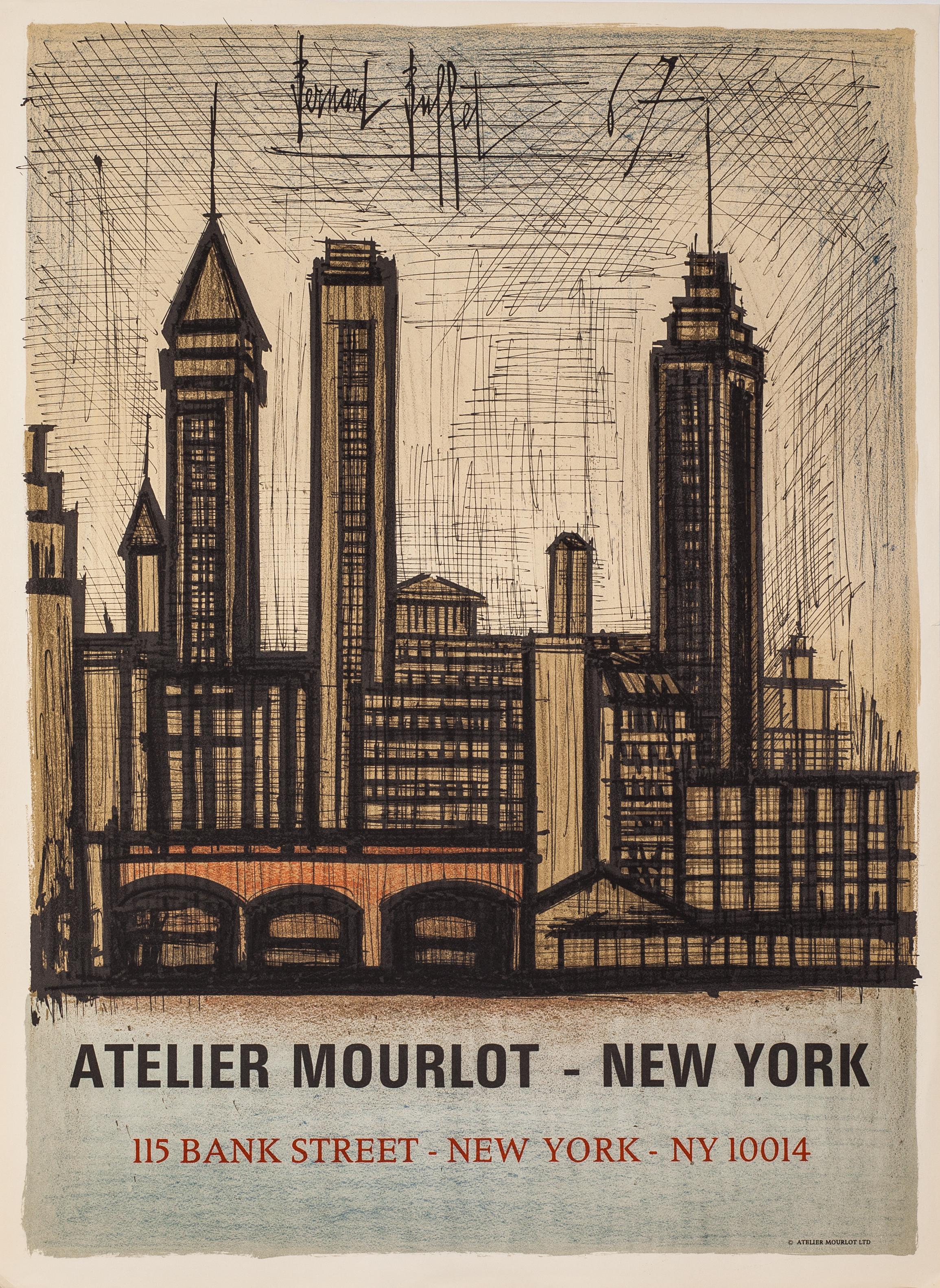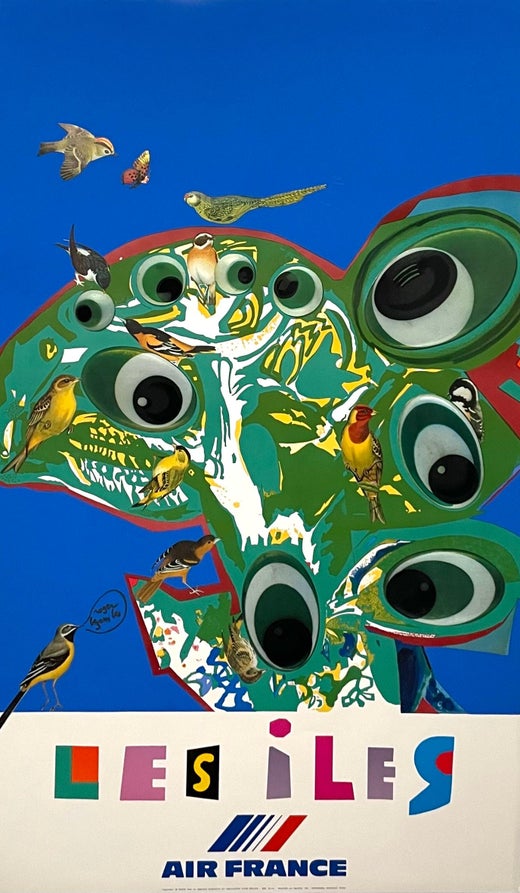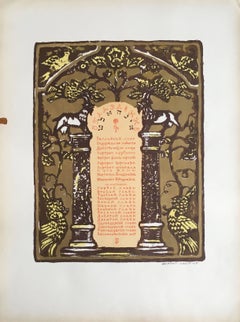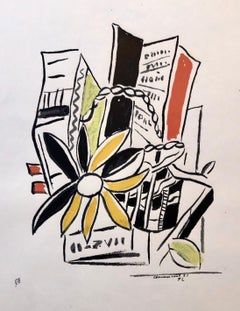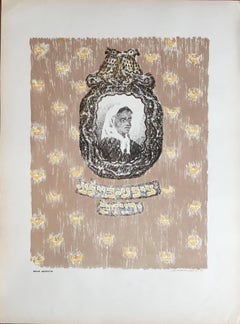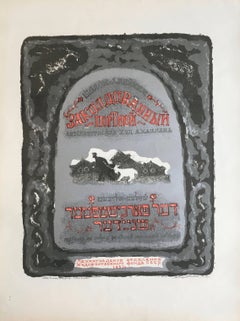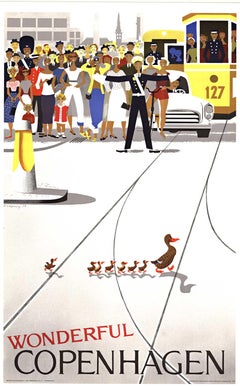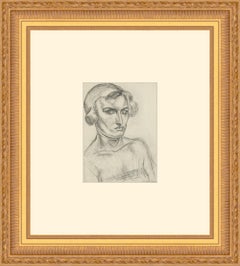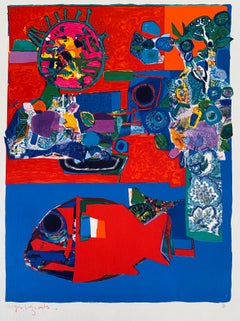
French Artist Modern Surrealist Lithograph Roger Bezombes
View Similar Items
Want more images or videos?
Request additional images or videos from the seller
1 of 17
Roger BezombesFrench Artist Modern Surrealist Lithograph Roger Bezombes
Price:$650
About the Item
- Creator:Roger Bezombes (1913 - 1994, French)
- Dimensions:Height: 26 in (66.04 cm)Width: 19 in (48.26 cm)
- Medium:
- Movement & Style:
- Period:
- Condition:Minor creases. Please see photos.
- Gallery Location:Surfside, FL
- Reference Number:1stDibs: LU3826741472
Roger Bezombes
Roger Bezombes (1913 - 1994) was a French painter, sculptor, medallist and designer. He studied in Paris at the Ecole des Beaux-Arts, and was much influenced by his friendship with Maurice Denis. He worked principally as a painter, adopting the saturated colours of Henri Matisse in landscapes and figure studies often based on observation of 'exotic' cultures, notably Mediterranean and North African. In the mid-1960s a new rawness emerged in his work, derived from 'primitive' examples and new materials associated with his experiments in other media. He executed tapestry designs for Aubusson, posters (winning the Grand Prix de l'Affiche Francaise in 1984), costumes and sets for ballets at the Metropolitan Opera House in New York, reliefs and murals. In 1965 he took up medal-making, expressing in his numerous metallic works for the Paris Mint that obsession with found objects which is also evident in his large-scale sculpture and in his posters.
About the Seller
4.9
Platinum Seller
Premium sellers with a 4.7+ rating and 24-hour response times
Established in 1995
1stDibs seller since 2014
1,798 sales on 1stDibs
Authenticity Guarantee
In the unlikely event there’s an issue with an item’s authenticity, contact us within 1 year for a full refund. DetailsMoney-Back Guarantee
If your item is not as described, is damaged in transit, or does not arrive, contact us within 7 days for a full refund. Details24-Hour Cancellation
You have a 24-hour grace period in which to reconsider your purchase, with no questions asked.Vetted Professional Sellers
Our world-class sellers must adhere to strict standards for service and quality, maintaining the integrity of our listings.Price-Match Guarantee
If you find that a seller listed the same item for a lower price elsewhere, we’ll match it.Trusted Global Delivery
Our best-in-class carrier network provides specialized shipping options worldwide, including custom delivery.More From This Seller
View AllVintage Russian Shtetl Lithograph
By Anatoli Lvovich Kaplan
Located in Surfside, FL
Pencil signed and dated, colored Judaica Lithograph.
Anatoli Lwowitch Kaplan was a Russian painter, sculptor and printmaker, whose works often reflect his Jewish origins.
His fathe...
Category
Mid-20th Century Modern More Prints
Materials
Lithograph
Fernand Leger Colorful Modernist Drawing Limited Edition Serigraph Lithograph
By (after) Fernand Léger
Located in Surfside, FL
Serigraph, from ''Album of Ten Serigraphs'' (1954-55), by Fernand Leger (French 1881-1955), signed and dated in plate lower right, printed by Jean Bruller, distributed by Galerie Int...
Category
1950s Modern Abstract Prints
Materials
Lithograph
Vintage Russian Shtetl Judaica Lithograph
By Anatoli Lvovich Kaplan
Located in Surfside, FL
Pencil signed and dated, colored Judaica Lithograph.
Anatoli Lwowitch Kaplan was a Russian painter, sculptor and printmaker, whose works often reflect his Jewish origins.
His father was a butcher in Rahachow which was at that time within the Jewish Pale of Settlement in Russia. His background was therefore not dissimilar to that of Marc Chagall, born a generation earlier in 1887, and although their lives were very different, their art has much in common. The shtetl figures in many of Kaplan's paintings - autobiographical references are very clear in The Butcher's Shop (1972) and Tailor's Shops (1975) and in the many illustrations which he was to create to the works of Sholem Aleichem...
Category
Mid-20th Century Modern More Prints
Materials
Lithograph
The Bewitched Tailor, Vintage Judaica Lithograph
By Anatoli Lvovich Kaplan
Located in Surfside, FL
Pencil signed and dated, colored Judaica Lithograph.
Anatoli Lwowitch Kaplan was a Russian painter, sculptor and printmaker, whose works often reflect his Jewish origins.
His father...
Category
Mid-20th Century Modern More Prints
Materials
Lithograph
Vintage Russian Shtetl Scene, Judaica Lithograph
By Anatoli Lvovich Kaplan
Located in Surfside, FL
Pencil signed and dated, colored Judaica Lithograph.
Anatoli Lwowitch Kaplan was a Russian painter, sculptor and printmaker, whose works often refl...
Category
Mid-20th Century Modern More Prints
Materials
Lithograph
Vintage Russian Shtetl, Scene Judaica Lithograph
By Anatoli Lvovich Kaplan
Located in Surfside, FL
Pencil signed and dated, colored Judaica Lithograph.
Anatoli Lwowitch Kaplan was a Russian painter, sculptor and printmaker, whose works often refl...
Category
Mid-20th Century Modern More Prints
Materials
Lithograph
You May Also Like
Original "Wonderful Copenhagen" vintage travel poster
Located in Spokane, WA
Original vintage poster: WONDERFUL COPENHAGEN created by the artist Viggo Vagnby. This antique poster is archival linen-backed, in excellent condition, and ready to frame. No da...
Category
1950s American Modern Animal Prints
Materials
Lithograph
Matisse Reflexion Vintage
By (after) Henri Matisse
Located in Brooklyn, NY
This artwork by Henri Matisse is a lithograph page from the book Cinquante Dessins, published by Les Soins de L'Artiste in 1920.
First Edition. The portfolio was edited and printed...
Category
1920s Modern Portrait Prints
Materials
Lithograph
$1,200 Sale Price
20% Off
Near Saint Paul de Vence - Stone lithograph - 1965
By André Derain
Located in Paris, IDF
André DERAIN
Near Saint Paul de Vence
Original lithograph in colors (printed in Atelier Lucien Detruit)
Printed signature in the plate
On Arches vellum 38 x 28 cm (c. 15 x 11 in)
I...
Category
1960s Modern Figurative Prints
Materials
Lithograph
New York City, The El at Chatham Square - Original lithograph , Handsigned / 100
By Adriaan Lubbers
Located in Paris, IDF
Adriaan Lubbers
New York City, The El at Chatham Square, 1930
Original lithograph
Handsigned in pencil
Numbered / 100
On Rives vellum 28 x 22.5 cm (c. 11 x 9 in)
Very good condition
Category
1930s American Modern Landscape Prints
Materials
Lithograph
Promenade Danis Le Parc
Located in Belgrade, MT
This etching by Dimitrios Galanis , Greek early 20th century artist is part of my private collection and there is only one available. Dimitrios Galanis was a good friend of Picasso. ...
Category
Early 20th Century Modern Landscape Prints
Materials
Paint, Ink, Etching, Lithograph
"Somber Planet"
By Manfred Schwartz
Located in Astoria, NY
Manfred Schwartz (American, b. Poland, 1909-1970), "Somber Planet", Lithograph on Paper, mid 20th century, numbered edition "13/90" lower left, signed in pencil lower right, with the...
Category
Mid-20th Century Modern Abstract Prints
Materials
Paper, Lithograph
Recently Viewed
View AllMore Ways To Browse
Erni Hans
Travel Poster Morocco
Van Gogh Vintage Poster
Maurice Fine Jewelry
Madrid Travel Poster
Mid Century Tapestry Brazilian
Rome Travel Poster
Paul Rene Gauguin
Godard Poster
Pierre Augustin
York Railway Poster
Madrid Vintage Travel Poster
Maurice Andre Tapestry
Prague Vintage Poster
Bengt Lindstrom
Le Corbusier Tapestry
Matisse Masks
Mediterranean Bed
